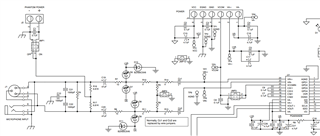Other Parts Discussed in Thread: PGA2505
Hi Team,
A customer is using PGA2505EVM and would like to know if it is possible to use an unbalanced audio line.
I understand from the datasheet that this device is for balanced input but I would like to know what would happen if they use an unbalanced input. Will the device work correctly (probably not). Do set the Vin- to ground work? Will the output be an unbalanced signal from Vout+?
I hope you can help.
Regards,
Marvin



